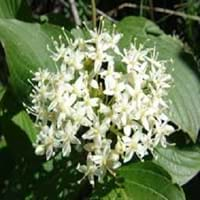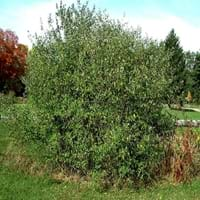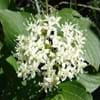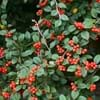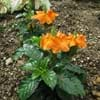Life Span
Perennial
Perennial
Origin
United States, Northeastern United States, Mid-Atlantic United States, Southeastern United States
Eastern Asia, China, Japan, Korea
Types
not available
Not Available
Habitat
Banks, Lake Sides, Shores of rivers or lakes
Dappled Shade, Hedge, Sunny Edge, Woodland Garden
USDA Hardiness Zone
5-8
3-8
Sunset Zone
3b, 4, 5, 6, 7, 8, 9
Not Available
Habit
Oval or Rounded
Oval or Rounded
Flower Color
Ivory
Light Yellow, Silver
Flower Color Modifier
Not Available
Not Available
Leaf Color in Spring
Green, Dark Green
Green, Light Green, Gray Green, Silver
Leaf Color in Summer
Dark Green
Green, Gray Green, Silver
Leaf Color in Fall
Dark Green, Brown, Dark Red
Green, Gold, Tan, Silver
Leaf Color in Winter
Not Available
Not Available
Leaf Shape
Acuminate
Lance shaped
Plant Season
Summer, Fall
Spring, Summer, Fall
Sunlight
Full Sun, Partial Sun, Partial shade
Full Sun, Partial Sun, Partial shade
Type of Soil
Clay, Loam, Sand
Clay, Loam, Sand
The pH of Soil
Acidic, Neutral, Alkaline
Acidic, Neutral, Alkaline
Soil Drainage
Average
Average
Bloom Time
Early Summer
Late Spring, Early Summer
Tolerances
Wet Site
Pollution, Drought, Salt
Where to Plant?
Ground, Pot
Ground, Pot
How to Plant?
Cuttings, Divison, Stem Cutting
Seedlings
Plant Maintenance
Medium
Medium
Watering Requirements
Average Water Needs
Average Water Needs
In Summer
Lots of watering
Lots of watering
In Spring
Moderate
Moderate
In Winter
Average Water
Average Water
Soil pH
Acidic, Neutral, Alkaline
Acidic, Neutral, Alkaline
Soil Type
Clay, Loam, Sand
Clay, Loam, Sand
Soil Drainage Capacity
Average
Average
Sun Exposure
Full Sun, Partial Sun, Partial shade
Full Sun, Partial Sun, Partial shade
Pruning
Remove damaged leaves, Remove dead branches, Remove dead leaves
Remove damaged leaves, Remove dead branches, Remove dead leaves
Fertilizers
All-Purpose Liquid Fertilizer
No fertilizers needed
Pests and Diseases
Red blotch
Leaf spot
Plant Tolerance
Drought
Drought
Flower Petal Number
Single
Single
Showy Bark
Yes
Not Available
Foliage Texture
Medium
Medium
Foliage Sheen
Matte
Matte
Attracts
Birds
Birds, Hummingbirds, Butterflies
Allergy
Unknown
Mild Allergen
Aesthetic Uses
Ground Cover, Wild gardens, Woodland margins
Informal Hedge
Beauty Benefits
Not Available
Not Available
Environmental Uses
Air purification
Fixes Nitrogen
Medicinal Uses
Not Available
Astringent, Cancer, Cardiac, Pectoral
Part of Plant Used
Not Available
Fruits, Seeds
Other Uses
Acts as a natural source of rain water for birds and insects.
Jam, Used for making informal hedge
Used As Indoor Plant
No
No
Used As Outdoor Plant
Yes
Yes
Garden Design
Foundation, Hedges, Mixed Border, Screening, Wind Break
Edible, Foundation, Mixed Border, Screening, Wind Break
Botanical Name
CORNUS amomum
ELAEAGNUS umbellata
Common Name
red willow
Autumn olive, Autumn elaeagnus, Spreading oleaster
In Hindi
silky dogwood
Autumn Olive
In German
silky dogwood
Herbst Olive
In French
silky dogwood
Automne Olive
In Spanish
silky dogwood
Otoño de oliva
In Greek
silky dogwood
φθινόπωρο Ελιά
In Portuguese
silky dogwood
Outono Olive
In Polish
silky dogwood
Jesień Olive
In Latin
silky dogwood
Autumnus Olive
Phylum
Magnoliophyta
Magnoliophyta
Class
Magnoliopsida
Magnoliopsida
Family
Cornaceae
Elaeagnaceae
Clade
Angiosperms, Asterids, Eudicots
Angiosperms, Eudicots, Rosids
Tribe
Not Available
Not Available
Subfamily
Not Available
Not Available
Number of Species
Not Available
Not Available
Importance of Silky Dogwood and Autumn Olive
Want to have the most appropriate plant for your garden? You might want to know the importance of Silky Dogwood and Autumn Olive. Basically, these two plants vary in many aspects. Compare Silky Dogwood and Autumn Olive as they differ in many characteristics such as their life, care, benefits, facts, etc. Every gardener must at least have the slightest clue about the plants he wants to plant in his garden. Compare their benefits, which differ in many ways like facts and uses. The medicinal use of Silky Dogwood is Not Available whereas of Autumn Olive is Astringent, Cancer, Cardiac and Pectoral. Silky Dogwood has beauty benefits as follows: Not Available while Autumn Olive has beauty benefits as follows: Not Available.
Compare Facts of Silky Dogwood vs Autumn Olive
How to choose the best garden plant for your garden depending upon its facts? Here garden plant comparison will help you to solve this query. Compare the facts of Silky Dogwood vs Autumn Olive and know which one to choose. As garden plants have benefits and other uses, allergy is also a major drawback of plants for some people. Allergic reactions of Silky Dogwood are Unknown whereas of Autumn Olive have Mild Allergen respectively. Having a fruit bearing plant in your garden can be a plus point of your garden. Silky Dogwood has showy fruits and Autumn Olive has showy fruits. Also Silky Dogwood is not flowering and Autumn Olive is not flowering . You can compare Silky Dogwood and Autumn Olive facts and facts of other plants too.
